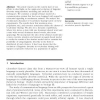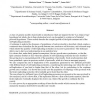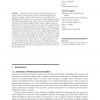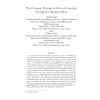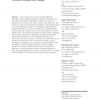ALIFE
1998
13 years 11 months ago
1998
The soil nematode Caenorhabditis Elegans (C. elegans) is the most investigated of all multi-cellular organisms. Since the proposal to use it as a model organism, a series of resea...
ALIFE
1998
13 years 11 months ago
1998
ALIFE
1998
13 years 11 months ago
1998
This article reports on the current state of our efforts to shed light on the origin and evolution of linguistic diversity using synthetic modeling and arti cial life es. We constr...
ALIFE
2007
13 years 11 months ago
2007
ALIFE
2007
13 years 11 months ago
2007
A class of generic models of protocells is introduced, which are inspired by the “Los Alamos bug” is but which, due to their abstraction level, can be applied to a wider set o...
ALIFE
2007
13 years 11 months ago
2007
Animals use diverse forms of communication, from sound signals to body postures. Recent ethological studies have reported a unique syntactic communication of a songbird, the Bengal...
ALIFE
2007
13 years 11 months ago
2007
ALIFE
2007
13 years 11 months ago
2007
This review essay surveys recent literature in the history of science, literary theory, anthropology, and art criticism dedicated to exploring how the artificial life enterprise ha...
ALIFE
2007
13 years 11 months ago
2007
Cross-reactions and other systematic difficulties generated by the coupling of functional chemical subsystems pose the largest challenge for assembling a viable protocell in the la...
ALIFE
2007
13 years 11 months ago
2007
Robert Rosen’s central theorem states that organisms are fundamentally different to machines, mainly because they are ‘‘closed with respect to effcient causation.’’ The p...

